

The subtalar joint is the most complicated joint of the foot. This can lead to subtalar joint arthritis and the pain can significantly reduce your mobility. We will explain how this amazing joint works and what can be done both conservatively and surgically. Ideally, we all share with you some new approaches that may delay or eliminate the need for surgery.
Introduction to the subtalar joint
The subtalar joint is in the rearfoot. The joint lies below the ankle joint. Biomechanically it complements the ankle joint because the ankle joint allows the foot to move up and down and the subtalar joint allows the foot to move side to side. It is similar to a universal joint on a car. You may have heard of the term’s supination and pronation. These motions include motions in three body plans. Supination includes inversion, adduction and plantarflexion. Pronation includes eversion, abduction and dorsiflexion. If you were to do circles with your foot the majority of this motion would take place in the subtalar joint. The ability to move in all different body planes allows the foot to adjust to irregularities in the surfaces that we walk on.
How do I know if I have subtalar joint arthritis?
- Pain will be noted when you first get up to walk right below your ankle joint
- You will notice more pain when you walk on irregular terrain.
- The pain will be deep and dull
- Arthritis X-ray will be seen as the space between the bones is reduced.
What can you do if you think you have subtalar joint arthritis?
- Wear more supportive shoes
- Take NSAIDs when you have pain
- Avoid irregular surfaces
- Consider an over-the-counter arch support or ankle brace
- Being overweight – Weight loss may also be important to consider
What is the cause of subtalar joint arthritis?
- Trauma – if you have had a fracture to the heel bone (calcaneus) or the ankle bone(talus). These fractures can result in trauma to the cartilage of the joint leading to eventual arthritis
- Overuse – just being very active and possibly experiencing occasional ankle sprains may also contribute.
- Secondary disease processes – If you have any arthritic conditions such as rheumatoid arthritis this also can cause secondary damage to the cartilage of the joint.
Treatment of subtalar joint arthritis pain
Conventional treatments
Orthotics – these are custom made arch supports. These help by reducing the amount of side-to-side motion that occurs in your foot. It’s very important to understand that the orthotics you get from retail stores, ski shops and other non- specialized healthcare providers may not be adequate. Many healthcare dollars are wasted on the types of devices. As podiatrists we are trained to use a different approach when it comes to the steps to create an orthotic. We believe a non-weight bearing neutral position of your foot. Placing your foot in this position is critical to having a very precise orthotic made. We place the foot where it should be not where it is when you’re putting weight on it. This makes for a much more precise fit. This is important if you’re going to get the maximum benefit from an orthotic.
Braces – ankle braces may also be used however they are not as practical in many situations as orthotics.
Cortisone – injections of cortisone can also be used to pain relief and to reduce inflammation. It’s important to understand that the long-term effects of cortisone are not good for the joint and in fact will accelerate the deterioration of the joint. So, if the last step in your treatment plan is to fuse the joint then this approach can be appropriate.
Fusion of the joint – finally when conservative efforts fail fusion of the joint can be performed. This surgery involves removal of the remaining cartilage from the joint and using bone screw(s) to help fuse it. In some cases a bone graft may be used to assist in the fusion. This requires extensive lay-up, usually off weight bearing for 6 weeks (about 1 and a half months). Full recovery will take months after surgery and you will no longer have the ability to move your rearfoot side to side. However, this limitation will usually be minimal compared to the pain you had before the surgery was performed.
At Anderson Podiatry center we offer two key alternatives that should be considered!
Yes, we also emphasize orthotics as part of our conservative approach, however the use of human cellular tissue products (stem cell) and a procedure called joint denervation surgery is also used.
- Human cellular tissue products – We were one of the earliest adopters of the idea 15 years ago. It started with the use of restorative medicine (stem cell) for getting rid of heel pain, plantar fasciitis. Soon we were noticing good results when used on arthritic joints of the foot. We currently use placenta cells or umbilical cord products. These are acquired from labs that are regulated by the FDA for safety. The process is done in our clinic with an injection into the joint and patients are able to ambulate immediately with minimal lay-up.
Our Patient Testimonials – Restorative Medicine



- Joint denervation surgery – The concept comes from a doctor Lee Dellon , a professor of plastic surgery and neurosurgery at John Hopkins. Very few doctors are trained to perform surgery on the peripheral nerves in the lower extremity. The idea is to block the pain you sense from an arthritic joint by removing one or nerve pathways that signal the pain to your brain. There are four primary nerves in the lower leg that do not supply muscles. We determine which of these branches can be removed. This is an outpatient surgery that allows you to walk in less than a week. This compares to 6 weeks (about 1 and a half months) off weight bearing for a subtalar joint fusion. The risk of this procedure is considered less. We remove the branch and bury the tip of the branch in muscle to eliminate potential regrowth. Your ability to feel the arthritic joint is significantly eliminated and your ability to ambulate is not affected and you do not lose strength or numbness to an area of the foot that allows you to balance. You may also return to most exercises.
Our Patient Testimonials – Joint denervation Surgery



Many of you may not be aware of the use of human cellular tissue products and joint denervation procedures. We’ve had great success with both as an alternative to joint fusion procedures and joint replacement surgeries in the foot and ankle. Anderson Podiatry Center has its own foot surgical center, which is beneficial for the paitent’s cost and final outcome because of the combined experience of the surgical team. So when searching for the ‘nearest podiatrist‘, please consider visiting our Anderson Podiatry Center clinics in Fort Collins and Broomfield.

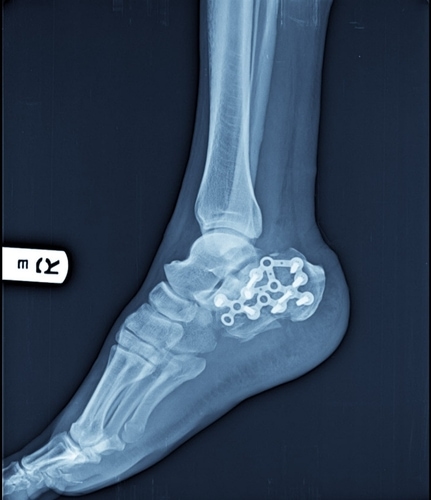
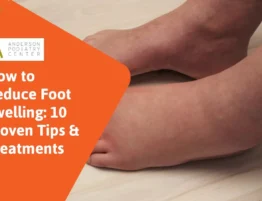
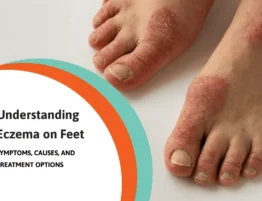


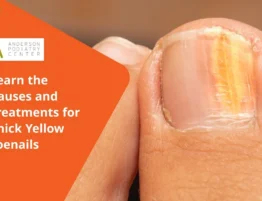
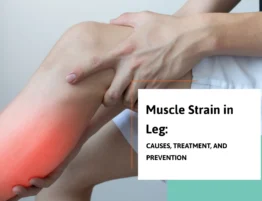
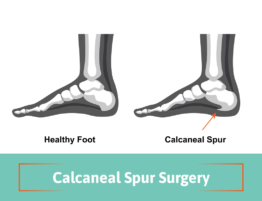
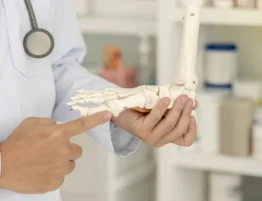
Write a comment: